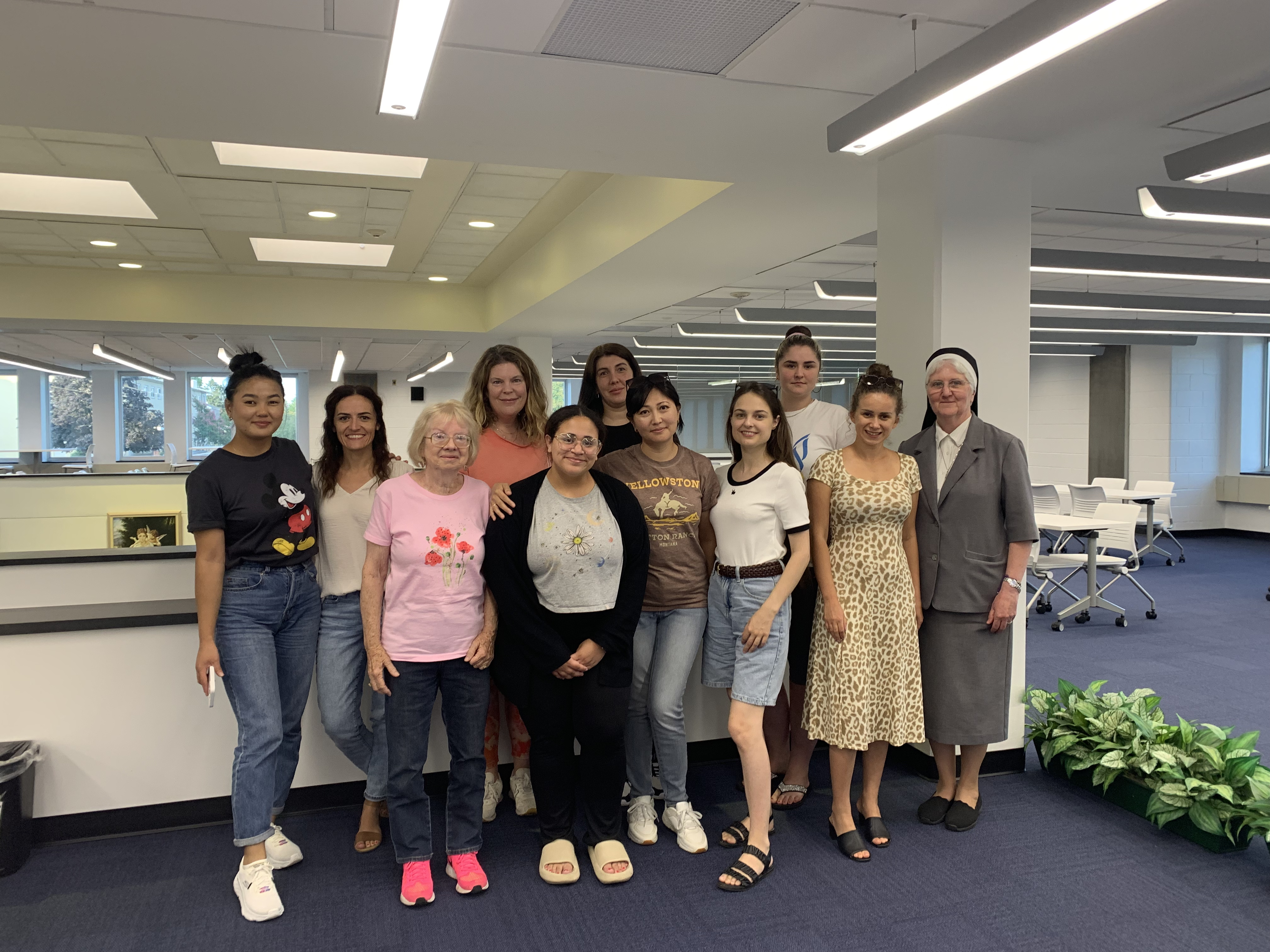ESL Certification Programs Lead to Caring, Supportive, Life-Changing Teachers
Dr. Roger Gee, a professor in the Holy Family University School of Education and director of the University’s Doctor of Education in Educational Leadership Program, recalls seeing a picture in the paper several months ago of a school in Italy welcoming two sisters from Ukraine. The girls were wide-eyed and holding hands, walking through a hallway lined with Italian students who were welcoming them with applause.
“I remember thinking, ‘What a great welcome the school gave to those kids’,” Gee said. “I could just imagine, by looking at that photo, the emotional experience that those students were going through.”
looking at that photo, the emotional experience that those students were going through.”
This reaction, even after more than 50 years in education (he taught English and was a reading specialist and ESL teacher in the Centennial School District for 31 years and has been full-time at Holy Family for the past 22 years), is proof positive of the importance that Gee and the University place on the significance of the ESL (English as a Second Language) certification program (six courses, 18 credits, online) and the TESOL master’s program (Teachers of English of Other Languages) program.
“It is scary for a student to go to a new school, a new culture, not knowing the language,” Gee said. “The ESL teacher brings a sense of security to that student. That’s not academic, and it’s not language learning, or learning math or history, but it is really important that you are someone who cares. Flexibility is also real important.”
Important and essential, Gee explains, because the ESL teacher is going to encounter so many different types of students, not only differing in the languages that they speak, but also because they arrive with different needs, some with special needs and challenges. Some come from interrupted educational programs. They may have had three years of formal schooling and be age-appropriate for middle school in their home country, and now that are transitioning to an American School, which may put them behind.
“Obtaining an ESL certification or master’s degree allows teachers, like those with special education certifications, to be more prepared to help more students,” Gee said.
Over the decades, Gee has studied the changing audio-lingual theory and methodology of language acquisition, both informally and through instruction. Today, he says, it is not so much about students repeating what they hear, but allowing students to make mistakes and instead placing the emphasis on language comprehension.
“Mistakes are a natural form of language learning,” he said. “So today, we don’t worry much about mistakes. Instead, we see them as a marker of where students are in their language acquisition. Language needs to be authentic and have communicative purposes rather than something that is just written or scripted. Our program addresses both oral and written acquisition of language and also differentiates between social and academic language. Students have to be able to communicate with their peers to integrate in the school, and they learn a lot of English that way. But they also have to learn academic English to succeed and meet the state proficiency standards. Our program puts an emphasis on literacy because there are some students who, because they are not strong readers and writers, having a difficult time testing out of ESL.”
Of course, testing out of the program, assimilating and matriculating are the ultimate goals of every ESL teacher.
“Students enrolled in our program have ready access to instructors who will help them develop into caring and supportive teachers, who are equipped to serve a very specific student population,” Gee said.
These qualities, he assures, translate universally from any language and have a lasting impact on the lives of the students they encounter.
